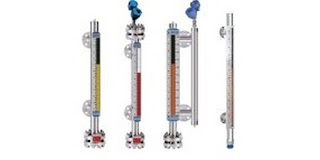 |
Updated SMARTDAC line of data acquisition instruments
Image courtesy Yokogawa |
Yokogawa Electric Corporation announced it's Release 4 of the SMARTDAC+® GX series panel-mount type paperless recorder, GP series portable paperless recorder, and GM series data acquisition system.
With this latest release, new modules are provided to expand the range of applications possible with SMARTDAC+ systems and improve user convenience. New functions include sampling intervals as short as 1 millisecond and the control and monitoring of up to 20 loops.
Overview
Recorders and data acquisition systems (data loggers) are used on production lines and at product development facilities in a variety of industries to acquire, display, and record data on temperature, voltage, current, flow rate, pressure, and other variables. Yokogawa offers a wide range of such products, and is one of the world’s top manufacturers of recorders. Since releasing the SMARTDAC+ data acquisition and control system in 2012, Yokogawa has continued to strengthen it by coming out with a variety of recorders and data acquisition devices that meet market needs and comply with industry-specific requirements and standards.
With this release, Yokogawa provides new modules with strengthened functions that meet customer needs for the acquisition and analysis of detailed data from evaluation tests. These modules decrease the cost of introducing a control application by eliminating the need for the purchase of additional equipment.
Enhancements
The functional enhancements available with Release 4 are as follows:
High-speed analog input module for high-speed sampling.
To improve the safety of electric devices such as the rechargeable batteries used in everything from automobiles to mobile devices, evaluation tests must be conducted to acquire and analyze detailed performance data. For this purpose, sampling at intervals as short as 1 millisecond is desirable. However, this normally requires an expensive, high-performance measuring instrument. When the new high-speed analog input module, a SMARTDAC+ system can sample data at intervals as brief as 1 millisecond, which is 1/100th that of any preceding Yokogawa product. This is suitable for such high performance applications such as measurement of the transient current in rechargeable batteries to vibration in power plant turbines. A dual interval function has also been added that enables the SMARTDAC+ to efficiently and simultaneously collect data on slowly changing signals (e.g., temperature) and quickly changing signals (e.g., pressure and vibration).
PID control module for control function
In applications that need both control and recording, such as controlling the temperature of an industrial furnace or the dosage process at a water treatment plant, there is a need for systems that do not require engineering and can be quickly and easily commissioned. In a typical control and monitoring application, a separate recorder and controller is required to control temperature, flow rate and pressure. At the same time, a data acquisition station must communicate with the controller to ensure data is being capture and recorded. It is time consuming and oftentimes confusing, to ensure the controller and the data acquisition station is communicating seamlessly. By combining continuous recording function of the SMARTDAC+ and PID control module into a single platform, customers can now seamlessly control and record critical process data in one system. The SMARTDAC+ can control, monitor and record up to 20 loops. Each PID control module comes with 2 analog inputs, 2 analog outputs, 8 digital inputs and 8 digital outputs.
Four-wire RTD/resistance module for precise temperature measurement
While three-wire RTDs are widely used in many fields such as research institutes to manufacturing, some applications require higher level of precision and accuracy that is only possible with 4-wire RTDs. A 4-wire RTD is the sensor of choice for laboratory applications where accuracy, precision, and repeatability are extremely important. To satisfy this need, Yokogawa has released a 4-wire RTD/resistance module for the SMARTDAC+.
Target Markets
GX series: Production of iron and steel, petrochemicals, chemicals, pulp and paper, foods, pharmaceuticals, and electrical equipment/electronics; water supply and wastewater treatment facilities.
GP series: Development of home appliances, automobiles, semiconductors, and energy-related technologies; universities; research institutes.
GM series: Both of the above target markets.
For more information on the SMARTDAC+ GX/GP Series Recorders & GM Series Data Acquisition System contact
Miller Energy at (800) 631-5454 or by visiting
the company website.






